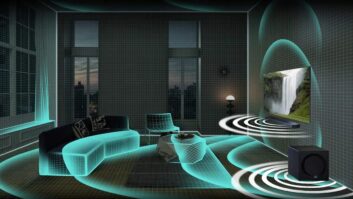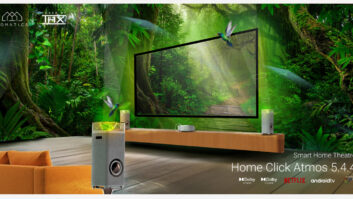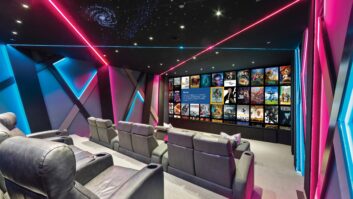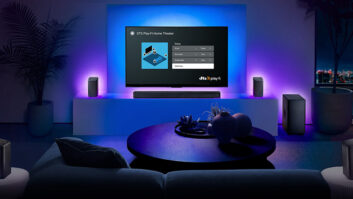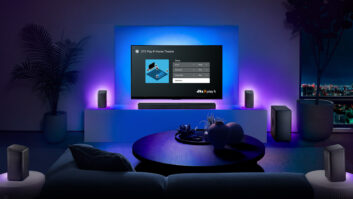Dolby Laboratories isn’t talking, but there don’t seem to be any major technical hurdles getting in the way of migrating the company’s Atmos surround-sound format from digital cinemas to home theaters in rather short order.
Atmos, launched in the digital-cinema market a year ago, has appeared in more than 30 theatrical releases, has gained the support of seven major Hollywood studios, and has been implemented in more than 90 movie theaters in 28 countries.
In its current implementation in digital cinemas, Atmos delivers individual sounds (called sound objects) to up to 64 different speakers, including overhead speakers, though the technology supports up to 128 simultaneous sounds.
With current surround technologies, in contrast, professional sound mixers assign multiple sounds to an individual channel in a five-channel sound system. That process masks many of the sounds that enhance realism. With Atmos, sound studios attach specific X, Y, and Z coordinates to each sound to describe that sound’s location in three-dimensional space at any given time.
That frees movie studios from the limitations imposed by cramming many sounds into a limited number of discrete channels.
Combined with psycho-acoustic techniques, sound-object mixing creates a more life-like experience in which more individual sounds are heard clearly and distinctly. Sounds also pan more smoothly around you, and the surround experience is improved no matter where you sit.
The technology scales down for playback through cinemas with fewer than 64 speakers, and it scales down to home theater systems with far fewer speakers. In fact, Atmos could be embedded in an active soundbar to deliver surround-sound performance that exceeds that of current soundbars with various types of virtual-surround processing, I’m told.
Atmos can also be calibrated to work optimally in different-size rooms with different acoustic characteristics.
So the number of speakers is not an impediment to Atmos’s home-theater adoption. Now what about soundtrack sources?
Atmos soundtracks could be placed on Blu-ray discs right now and played back through existing Blu-ray players. The players would spit out the Atmos bitstream through their HDMI outputs to future A/V receivers with embedded Atmos decoders.
No one is saying when those A/V receivers will be available, but there doesn’t seem to be any technical limitations that would prevent those receivers from becoming available sooner rather than later.
A/V receiver suppliers, however, likely won’t make a decision until they hear about the progress made by the Blu-ray Disc Association (BDA) in adding new technologies to the Blu-ray standard.
Last fall, the Blu-ray Disc Association (BDA) formed a task force called the “format extension study task force” to evaluate new technologies that might be added to the Blu-ray format. The task force includes representatives from the, CE and IT communities.
The task force is using three major criteria to determine whether a proposed technology, such as 4K, new audio codecs, expanded color space, high frame rate, and the like should be recommended for addition to the Blu-ray specifications, a BDA spokesman said.
They criteria are:
1) Technical feasibility. Will the proposed technology actually work with Blu-ray media?
2) Expected market demand. Will enough consumers buy it to allow for a reasonable return on the investment?
3) The technology’s impact on existing Blu-ray players. What would happen if a disc containing the new capability was inserted into a player that didn’t support it? Would it cause an undesirable effect, would the player decline to play it, or would existing players ignore the new feature entirely and play the disc as it usually would?
“If the candidate technology can satisfy these three main areas of study, the task force can recommend to the board of directors that it be added to the specifications,” the BDA spokesman said.
As for timing, the spokesman said, “It’s very difficult to say exactly (or even roughly) when something tangible will come out of the process, but I think everyone involved is motivated to keep things moving as efficiently as possible.”
If BDA doesn’t let competing members’ interest get in the way, Atmos and DTS’s competing Multi-Dimensional Audio (MDA) format could soon make their way onto the next-generation of high-definition video disc.







